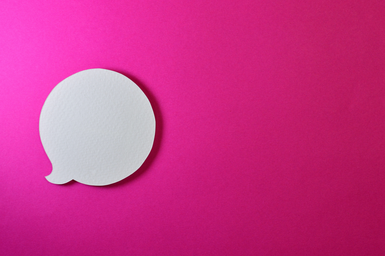The most simplistic definition of minimalism is that it is objective, literal, and pushed to extreme simplicity. It is characterized by limited, monotone colours and hard edges. Originally, minimalism started as an art movement in the 1960s as a ‘protest’ to the Action Paintings that became popular in the 50s. Action paintings are characterized by many colours, organic shapes (swirls and splotches), and little to no form; think Jackson Pollock.
Since then, minimalism has become the answer to rejecting a consumerist society. Everywhere you go, there are articles and people preaching the benefits of a minimalist lifestyle. In fact, when you search ‘minimalism’ in Google, the first search results that come up are essentially minimalist propaganda. However, minimalism’s origin is the real reason it is the worst.
Minimalism is rooted in facism. Minimalism has caused society to look down on cultures that use bright colours and intricate ornamentation in their art and architecture; it has allowed society to continue in it’s systemic racism.
Fascism is hard to define, but it is a political structure whose main principles promote nationalism (the belief your country is better than all the others), reject socialism, and exclude certain groups that don’t fit with the ‘ideal’. The foundations of minimalism began in Austria in the1900s in the Bauhaus School, which sought to bring other arts like furniture making, textiles, and architecture to the same level as fine arts. Both this school and the minimalism movement were inspired by an architect named Adolf Loos, who’s main philosophy is encompassed by this quote: “The development of culture is concurrent with the removal of ornaments from objects of daily use.” He believed that removing ornamentation from everyday objects would allow a place’s culture to blossom. Thoughminimalism’s fascist roots might not be immediately evident within that phrase, if you read the essay it came from, “Ornament and crime,” it will become a little more obvious.
In this essay, Loos first equates “ornament” with “degenerates” and “criminals” through the application of tattoos.Tattoos come from the same desire that ornament does and only criminals, or those who will soon be criminals, have tattoos. He later says that he is “speaking to the aristocrat” who understands “the distress and want of those below.” He then lists those people to be of Persian, Slavic, and African descent (he uses an offensive and outdated term in place of African). Loos says that those who “tolerate” the ornaments made by people who are not the aristocrat understand that “they have no other way of attaining the high points of their existence.” Obviously, all of this is not only extremely racist but it is also based in extreme white supremacy. Two key principles of facism. Here Loos is looking down on people based on the fact that he believes they aren’t as sophisticated as the European aristocrat. These are the principles that founded minimalism.
If we look at it in a more modern sense, we can see these fascist, exclusionist ideals when we talk about “professionalism.” Modern professionalism is a person in a clean suit with slicked-back hair. Even though this is the ideal for descendents of European culture, we hold every single culture to this standard. We erase traditional clothes, natural hair, and cultural tattoos because we have equated them with being unprofessional and unsophisticated. This continues to perpetuate the racism and white supremacy found in early minimalism. Minimalism has turned monotone colours, basic suits, and zero ornamentation into the epitome of sophistication and professionalism. Professionalism should not be equated with outward appearance. While tattoos are seen as unprofessional in Western culture, this is not the case for many other cultures worldwide. In fact, in some cultures, the more tattoos you have, the higher esteem you are held in; like in Maori culture. In other cultures, tattoos signified maturity, like in the Inuit culture, or they had spiritual significance, like in buddhist culture.
Minimalism has become a lifestyle that markets itself in every modern interior design, fashion, and architecture magazine; it is marketed as a way to find freedom. But the people that preach minimalism do not realize where it came from and the hate it’s continuing to perpetrate against cultures all around the world. The origins of minimalism had nothing to do with owning less or living with fewer means. Minimalism was created to increase nationalism in western Europe and to allow another reason for western Europeans to discriminate and marginalize anyone who didn’t fit their ideal.
Remember, there is nothing wrong with wanting to own fewer things, unsubscribing to consumerism, or decorating your home with geometric art and neutral colours, but it’s always important to consider WHY you are doing it. Are you only using neutral colours because you were told other colours aren’t as sophisticated? Do you really like simple, geometric furniture and architecture, or were you told that ornamentalism is ‘tacky’ or ‘messy’?
While I am a supporter of arts of all kinds, art that promotes hate, that promotes discrimination, that allows you to make others feel worse about themselves; that is not art. So I’ll say it again: Minimalism. Is. The. Worst.
I’ll leave you with this: if simple silhouettes and neutral colours make you happy, go for it! If wearing bright colours and statement pieces makes you happy, then go for it! If you like having a lot of knick knacks and objects, then that’s okay too! Don’t let society decide what is sophisticated or correct, and don’t allow minimalism to continue to be a mechanism for discrimination.
https://www.britannica.com/art/Minimalism
https://www.theartstory.org/movement/bauhaus/
https://uxdesign.cc/how-minimalism-is-rooted-in-fascism-7204b15482a8
Ornament and Crime (Again, neither I nor HCUWindsor condone any of the ideas in this article. It uses outdated language and racist views.)


